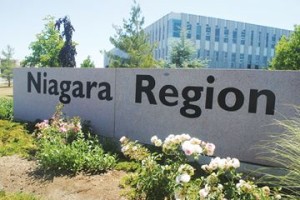Consumer price index called ‘irrelevant’ in setting affordability guideline
Niagara This Week - St. Catharines
By Paul Forsyth
NIAGARA — Property taxpayers in Niagara will have to fork over a little more money to keep regional government services going in 2017, but most people will still be ahead of the game compared to inflation.
That’s because the years-long practice of miserly budget increases will continue again next year, with regional politicians on Thursday night directing staff to plug away on a regional budget that doesn’t exceed a one per cent increase.
That decision, almost certain to be endorsed at the next regularly scheduled council meeting, sets a ceiling that’s half of the two per cent maximum increase that staff were proposing.
The one per cent limit comes on the heels of this year’s budget freeze, and a five-year annual increase on the regional share of the property tax bill that’s averaged just 1.8 per cent.
The ceiling also applies to various agencies, boards and commissions that the Region funds.
Helen Chamberlain, regional deputy treasurer and associate director of budget planning and strategy, said in her presentation at the regional budget meeting that a two per cent increase aligns with the Bank of Canada’s core consumer price index (CPI) of two per cent.
“We also want to make sure we maintain taxpayer affordability,” she said.
Regional staff were recommending that about $3.1 million in savings that the Region will see through uploading of program costs to the province be absorbed in next year’s budget, and for about $3.2 million in anticipated assessment growth from new developments to be earmarked for strategic priorities of council and initiatives designed to promote economic growth such as GO Transit, development charge exemptions on industrial projects, and tax incentives.
Politicians instead set that money aside and will decide in the fall what to do with it.
Regional budget chair and Port Colborne Coun. David Barrick said that was done to ensure transparency and to give council control over what those funds are used for. For instance, they could decide once they get a draft budget from staff to take about half of it and knock the tax hike down to another tax freeze, he said.
“We want to ensure accountability on how the money is spent,” Barrick told Niagara This Week.
Niagara Falls Coun. Bart Maves said when you figure in uploading, assessment growth and planned increases to rates on such things as water and sewer services and curbside waste collection, a two per cent increase would have pushed overall spending up a little over $15 million. A one per cent spending increase equals about $3.2 million on the regional budget.
Regional property taxes account for nearly half of the overall property tax bill, which also includes education taxes and those of local towns and cities. The average household with a home assessed at $240,500 is paying about $1,400 in regional property taxes this year.
St. Catharines Coun. Bruce Timms successfully convinced fellow politicians to pare back the tax hike ceiling to one per cent, noting the CPI quoted by staff doesn’t include a host of costs including fruit and vegetables, gasoline, natural gas, tobacco products and mortgage interest.
“The CPI seems irrelevant,” he said.
Timms said directing staff to achieve last year’s freeze led to savings of $2.7 million being found. “We came back with some amazing results when we set the guidance at zero,” he said. “Let’s set the guidance at one per cent and see what staff can come up with.
“I’m not satisfied that the two per cent based on the CPI is good enough.”
Timms and St. Catharines Coun. Andy Petrowski also noted regional statistics show that per capita personal income in Niagara is only forecasted to increase by 1.1 per cent this year, and Canada Pension Plan income for seniors will only increase 1.2 per cent in 2016.
“CPI has nothing to do about the ability to pay,” said Petrowski. “The median incomes and the seniors are shouting from the hilltops that it’s one per cent.
“Maybe we have to find ways to cut spending.”
Timms told Niagara This Week that Thursday’s meeting sets a crucial budgetary bar for staff to stick to.
“It’s the most important meeting of the year,” he said.
The budget is expected to be finalized by year’s end. Timms said regional staff will toil on the budget over the summer, and that public consultation will include an online questionnaire expected to be launched in early July, plus focus groups in August and September.
Welland Coun. Paul Grenier convinced fellow council members to cram in more budget meetings than the number proposed by regional staff, saying that during budget talks last year many politicians felt rushed.
“We jammed everything into one meeting at the end,” he said. “There was an overwhelming number of councillors who felt we didn’t have time to properly vet what was in the budget.”
Barrick said in an interview that a one per cent ceiling is realistic.
“It’s a very responsible budget that demonstrates a respect for taxpayers,” he said.

